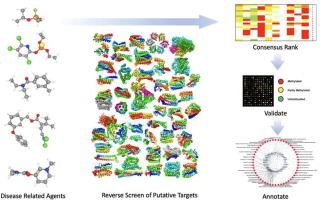Computational and Structural Biotechnology Journal ( IF 4.4 ) Pub Date : 2022-11-08 , DOI: 10.1016/j.csbj.2022.11.006 Modeline Jean-Pierre 1, 2 , Lindsay T Michalovicz 3 , Kimberly A Kelly 3 , James P O'Callaghan 3 , Lubov Nathanson 2, 4 , Nancy Klimas 2, 4, 5 , Travis J A Craddock 1, 2, 4, 6

|
Gulf War Illness (GWI) is a chronic illness that affects upward of 32% of deployed Veterans to the 1991 Gulf War (GW). The symptoms are medically unexplained, ranging across cognitive deficits, fatigue, gastrointestinal problems, and musculoskeletal pain. Research indicates that chemical warfare agents play a key role in the onset and progression of GWI. The Khamisiyah ammunition storage that housed chemical warfare agents such as sarin, an acetylcholinesterase (AChE) inhibitor, was demolished during the GW, releasing toxicants into the atmosphere affecting deployed troops. Exposure to other chemical agest such as pyridostigmine bromide , N,N-diethyl-m-toluamide, permethrin and chlorpyrifos, were also prevalent during the war. These additional chemical agents have also been shown to inhibit AChE. AChE inhibition induces an acetylcholine build-up, disrupting signals between nerves and muscles, which in high doses leads to asphyxiation. Little is known about low dose exposure. As bioactive compounds tend to interact with multiple proteins with various physiological effect, we aimed to identify other potential shared targets to understand the extent in which these chemicals could lead to GWI. We followed a reverse screening approach where each chemical is computationally docked to a library of protein targets. The programs PharmMapper and TargetNet were sued for this purpose, and further analyses were conducted to mark significant changes in participants with GWI. Previously published work on DNA methylation status in GWI was reanalyzed focusing specifically on the predicted shared targets indicating significant changes in DNA methylation of the associated genes. Our findings thus suggest that exposure to GWI-related agents, may converge on similar targets with roles in inflammation, neurotransmitters and lipid metabolism, and detoxification which may have impacts on neurodegenerative-like disease and oxidative stress in Veterans with GWI.
中文翻译:

一项试点反向虚拟筛选研究表明,接触有毒物质会导致海湾战争疾病的长期表观遗传变化
海湾战争病 (GWI) 是一种慢性疾病,在 1991 年海湾战争 (GW) 中影响了超过 32% 的已部署退伍军人。这些症状在医学上无法解释,包括认知缺陷、疲劳、胃肠道问题和肌肉骨骼疼痛。研究表明,化学战剂在 GWI 的发生和发展中起着关键作用。Khamisyah 弹药库存放化学战剂,如沙林,一种乙酰胆碱酯酶 (AChE) 抑制剂,在 GW 期间被拆除,将有毒物质释放到大气中,影响部署的部队。接触其他化学制剂,如溴化吡啶斯的明、N,N-二乙基-间甲苯胺、氯菊酯和毒死蜱,在战争期间也很普遍。这些额外的化学试剂也被证明可以抑制 AChE。AChE 抑制诱导乙酰胆碱积累,破坏神经和肌肉之间的信号,高剂量会导致窒息。对低剂量暴露知之甚少。由于生物活性化合物倾向于与具有各种生理效应的多种蛋白质相互作用,我们旨在确定其他潜在的共同目标,以了解这些化学物质可能导致 GWI 的程度。我们采用了一种反向筛选方法,其中每种化学物质都通过计算与蛋白质靶标库对接。为此目的起诉了 PharmMapper 和 TargetNet 程序,并进行了进一步分析以标记 GWI 参与者的显着变化。重新分析了先前发表的关于 GWI 中 DNA 甲基化状态的工作,特别关注预测的共享目标,表明相关基因的 DNA 甲基化发生了显着变化。











































 京公网安备 11010802027423号
京公网安备 11010802027423号